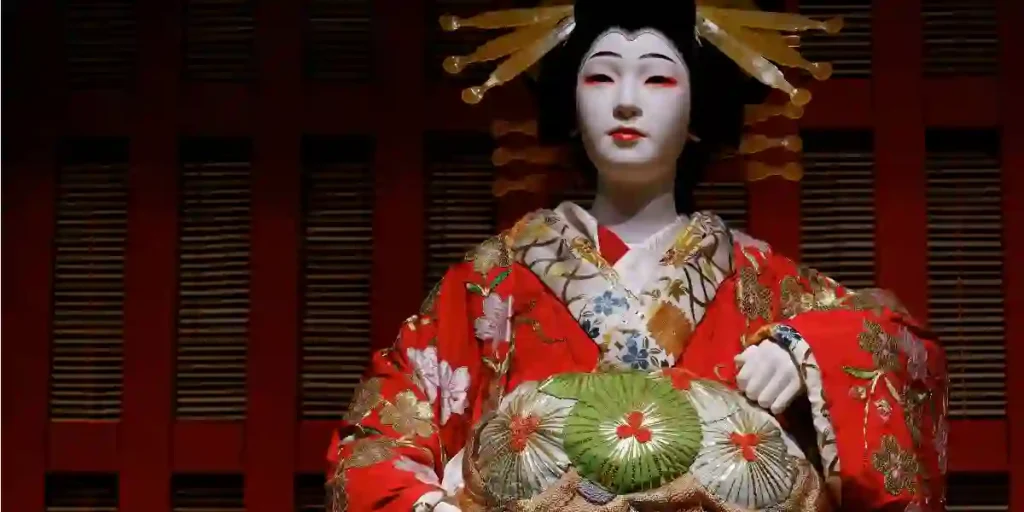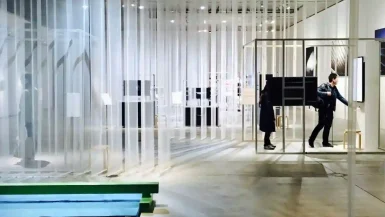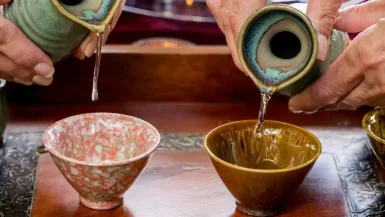Japan is a country rich in cultural traditions. Indeed, among its most significant contributions to global culture are Japanese theatres and music. These art forms not only reflect the nation’s deep-rooted history but also showcase its unique aesthetics and evolving social landscape. Moreover, Japanese theatres and music have been pivotal in shaping the country’s identity. They continue to profoundly influence contemporary art and entertainment worldwide. In this article, we will delve into the fascinating world of Japanese theatres and music, exploring their history, various forms, and significant impact on modern culture.
The Historical Roots
Japanese theatres and music have a long and storied history that dates back centuries. The origins of these art forms trace back to ancient religious rituals and courtly entertainment. As Japan’s society evolved, its theatrical and musical expressions also evolved, developing distinct styles that people still celebrate today.
Noh: The Quintessence of Japanese Theatres and Music
Noh theatre is one of the oldest forms of Japanese theatres and music. It emerged in the 14th century during the Muromachi period, drawing significant influence from Shinto rituals and Buddhist themes. Its minimalist aesthetic, slow-paced movement, and use of masks define Noh’s unique character.The music in Noh, featuring traditional instruments like flutes, drums, and a chanting chorus, is crucial to the performance. Together with the drama, it creates an ethereal experience that blurs the line between reality and the spiritual world.
Noh theatre’s influence on Japanese theatres and music cannot be overstated. Its themes of impermanence, spirituality, and the human condition resonate deeply with Japanese culture. Noh continues to be performed today, with many of its plays passed down through generations. It also impacts on other forms of Japanese theatre, such as Kabuki and Bunraku, which have incorporated elements of Noh into their performances.

Kabuki: The Dynamic Face of Japanese Theatres and Music
Kabuki is perhaps the most well-known form of Japanese theatres and music. It originated in the early 17th century during the Edo period and quickly became popular among the common people. Kabuki is famous for its vibrant costumes, elaborate makeup, and dynamic performances. Unlike Noh, which is more reserved and spiritual, Kabuki is theatrical and flamboyant. It often features dramatic plots, exaggerated movements, and lively music.
Music plays a crucial role in Kabuki, helping to set the tone, convey emotions, and enhance the overall spectacle. The traditional instruments used in Kabuki music include the shamisen (a three-stringed instrument), taiko drums, and flutes. The music in Kabuki is not merely an accompaniment; it is an integral part of the performance, with musicians often appearing on stage and interacting with the actors.
Kabuki’s impact on Japanese theatres and music extends beyond its immediate popularity. It has influenced modern Japanese theatre, film, and television, with its distinctive style and themes appearing in various contemporary works. Moreover, Kabuki has been recognized by UNESCO as an Intangible Cultural Heritage, highlighting its importance in preserving Japanese cultural identity.
Bunraku: The Art of Japanese Theatres and Music in Puppetry
Bunraku, also known as Ningyo Joruri, is another significant form of Japanese theatres and music. It is a traditional puppet theatre that emerged in the 17th century during the Edo period. Bunraku performances are famous for their intricate puppetry, elaborate costumes, and emotionally charged storytelling. What sets Bunraku apart from other forms of Japanese theatre is the skillful manipulation of the puppets.
Music in Bunraku is performed by a tayu (narrator) and a shamisen player. The tayu not only narrates the story but also voices all the characters, bringing the puppets to life. The shamisen provides the musical backdrop, enhancing the emotional intensity of the performance. The synergy between the narration and music in Bunraku is a testament to the depth and complexity of Japanese theatres and music.
Bunraku’s influence on Japanese theatres and music is profound. It has inspired other forms of theatre, including Kabuki, which has incorporated Bunraku’s storytelling techniques and themes. Bunraku remains a popular art form in Japan today, with performances held regularly at dedicated theatres such as the National Bunraku Theatre in Osaka.
The Role of Music
Music is an essential component of Japanese theatres and music. It serves as more than just an accompaniment to the performances; it is a vital element that enhances the emotional and aesthetic experience. The music in traditional Japanese theatre is deeply intertwined with the narrative.
Traditional Instruments
Several traditional instruments are commonly used in Japanese theatres. Notably, these instruments have unique sounds and play specific roles in the performances. Among the most prominent instruments are:
- Shamisen: A three-stringed instrument played with a plectrum, the shamisen is a central instrument in Kabuki and Bunraku. Its sharp, percussive sound is versatile, capable of conveying a wide range of emotions.
- Taiko Drums: Taiko drums are used in various forms of Japanese theatres, including Noh, Kabuki, and traditional festivals. Their deep, resonant sound adds a powerful, rhythmic element to performances.
- Flutes (Shinobue and Nohkan): Flutes are commonly used in Noh and Kabuki. The shinobue is a bamboo flute with a high-pitched tone, while the nohkan is used specifically in Noh theatre and has a distinctive, piercing sound.
- Koto: The koto is a traditional Japanese zither with 13 strings. Although less commonly used in theatre, it is often featured in music associated with Japanese cultural performances.
These instruments contribute to the unique soundscapes of Japanese theatres, creating an immersive auditory experience that complements the visual and narrative elements.
The Evolution of Japanese Theatres and Music in the Modern Era
As Japan entered the modern era, Japanese theatres and music underwent significant changes. The Meiji Restoration in the late 19th century brought about rapid modernization and Westernization. This period saw the introduction of Western musical instruments and theatrical styles, which began to influence traditional Japanese performances.
The Influence of Western Music
Western music began to make its mark on Japanese theatres during the Meiji period. Western instruments such as the piano, violin, and guitar were introduced, and their sounds started to blend with traditional Japanese music. This fusion gave rise to new musical genres and theatrical styles that incorporated both Japanese and Western elements.
A notable example includes the emergence of “Shingeki” or “New Theatre,” strongly influenced by Western drama. Shingeki focused on realistic acting and contemporary themes, contrasting with the stylized performances of traditional Japanese theatre. While it did not completely replace traditional forms, Shingeki played a significant role in the evolution of Japanese theatres, paving the way for modern theatrical productions.
Contemporary Japanese Theatres and Music: A Fusion of Tradition and Innovation
Today, Japanese theatres and music continue to evolve, blending traditional and modern elements. Contemporary Japanese theatre often incorporates Western techniques and themes while maintaining a strong connection to its cultural roots. Similarly, modern Japanese music spans a wide range of genres, from traditional folk music to J-pop, demonstrating the country’s ability to innovate while preserving its heritage.
The Revival and Preservation
Despite the influence of modernization, there has been a strong movement to preserve traditional theatres and music. Organizations and practitioners are dedicated to keeping these art forms alive, ensuring that they continue to be passed down to future generations. Festivals, performances, and educational programs are regularly held to promote awareness and appreciation of traditional Japanese theatres and music.
In recent years, there has been a noticeable resurgence of interest in Noh, Kabuki, and Bunraku among younger audiences. Moreover, these traditional forms are being reinterpreted in contemporary contexts, with modern productions actively experimenting with new themes, settings, and technologies. Consequently, this revitalization ensures that Japanese theatres and music remain relevant in today’s cultural landscape.
Japanese Theatres and Music in Global Culture
Japanese theatres and music have had a significant impact on global culture. Their influence can be seen in various art forms, including film, literature, and contemporary music. The aesthetics and themes of Japanese theatres, have inspired artists and performers worldwide.
The Global Influence of Japanese Theatres and Music
Japanese theatres and music have inspired numerous Western filmmakers, playwrights, and musicians. For example, the works of Akira Kurosawa, a legendary Japanese filmmaker, have drawn heavily from Noh and Kabuki, significantly influencing directors like Martin Scorsese and George Lucas. Moreover, traditional Japanese music has similarly found its way into various global music genres, with artists increasingly incorporating elements of shamisen, taiko, and koto into their compositions.
The global popularity of Japanese pop culture, including anime, manga, and video games, has also brought Japanese theatres and music to a wider audience. Many anime series feature soundtracks that blend traditional Japanese instruments with modern music, creating a unique auditory experience that resonates with international fans.
The Future of Japanese Theatres and Music
As we look to the future, it is clear that Japanese theatres and music will continue to evolve. The fusion of traditional and modern elements will likely persist, leading to new and innovative forms of expression. At the same time, efforts to preserve and promote traditional Japanese theatres and music will ensure that these cultural treasures remain a vital part of Japan’s identity.
Embracing New Technologies in Japanese Theatres and Music
One of the most exciting developments in Japanese theatres and music is the integration of new technologies. Virtual reality, augmented reality, and artificial intelligence are beginning to play a role in theatres and music, creating immersive experiences that were previously unimaginable. For example, VR technology allows audiences to experience traditional Noh or Kabuki performances in virtual environments, bringing these ancient art forms to global audiences who may never have the opportunity to visit Japan.
Similarly, AI is being used to analyze and recreate traditional music compositions, enabling new interpretations and collaborations. AI-driven music platforms are experimenting with traditional Japanese instruments, generating new compositions that blend ancient sounds with modern genres. This intersection of technology and tradition is pushing the boundaries of what is possible in Japanese theatres and music, opening up new avenues for creative expression.
International Collaborations in Japanese Theatres and Music
Another trend shaping the future of theatres and music is international collaboration. Japanese artists are increasingly working with musicians, directors, and performers from around the world, creating cross-cultural productions that resonate on a global scale. These collaborations often result in innovative performances that blend the unique elements of Japanese theatres and music with diverse international influences.
Some Kabuki actors have adapted traditional plays for international audiences, while Japanese musicians, like those who play the shamisen or koto, are collaborating with Western artists to create compositions that bridge cultural gaps.
Challenges Facing Japanese Theatres and Music
While the future of Japan’s theatres and music is full of potential, there are also challenges that must be addressed. One of the most significant challenges is the aging population of practitioners in traditional Japanese theatre and music. Many master performers and musicians are in their later years, and the transmission of knowledge to younger generations is critical to ensuring the survival of these art forms.
The Need for Preservation and Education
Preserving theatres and music requires a concerted effort in education and training. Schools dedicated to these art forms need support, and new initiatives should attract young people to study them. This includes updating the curriculum to be more accessible while preserving traditional techniques.
In addition, there is a need for greater public awareness of the cultural importance of theatres and music in Japan. These art forms are prominent within Japan. However, promoting them internationally still requires much work. Efforts to increase accessibility, such as offering subtitles in multiple languages for Kabuki performances or creating online platforms for Noh music, can help broaden the appeal of these traditions.
The Cultural Significance
Theatres and music in Japan are deeply connected to the country’s cultural and spiritual life.
The Role of Japanese Theatres and Music in Identity and Community
For many Japanese people, theatres and music are not only a source of national pride and identity, but they also provide a deep connection to the past. Moreover, they offer valuable insights into the lives and beliefs of their ancestors. Additionally, participating in or attending traditional performances is often seen as a meaningful way to honor one’s heritage and, furthermore, to pass on these cultural treasures to the next generation.
Theatres and music also play a significant role in community life. Festivals, which often feature Noh, Kabuki, and traditional music performances, bring people together, fostering a sense of unity and shared purpose. These events are not just about watching a performance; they are communal experiences that reinforce social bonds and cultural continuity.
Conclusion: The Enduring Legacy
The story of theatres and music in Japan is one of resilience, creativity, and cultural significance. From the ancient rituals of Noh and the vibrant energy of Kabuki to the intricate puppetry of Bunraku and modern Japanese music, these art forms have adapted over time while preserving their essence. They have influenced global culture, inspired countless artists, and remain a vital part of Japan’s identity.
By embracing new technologies, fostering international collaborations, and investing in education and public awareness, Japan can ensure that its theatres and music remain vibrant and relevant for generations to come.
Japanese theatres and music are not just historical artifacts; they are living traditions that continue to evolve and inspire. Their enduring legacy is a testament to the power of art to transcend time and culture, connecting us to the past while guiding us toward the future.



